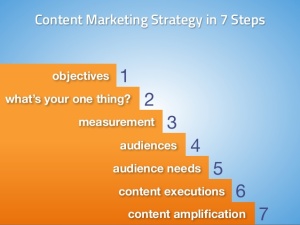by tradesmeninsights | Mar 6, 2020 | Manufacturing, Marketing Trends, Tradesmen Insights
A recent study published by The Content Marketing Institute identifies issues that manufacturing content marketers are facing. The B-to-B sector has always been known to be slightly behind the curve when compared to consumer goods, but the manufacturing side is even farther behind. The good news is that this sector is willing to try things, and this study shows that they are now identifying things that work and are focusing on improving them.
One thing that definitely needs improving: too many manufacturing organizations are still talking about themselves instead of prioritizing their audience’s informational needs. While 51% of manufacturers regularly prioritize audience information needs, this number is quite a bit lower than the 73% of B2B North America content marketers who do.

So, how can manufacturing marketers reverse this? (more…)
by tradesmeninsights | Nov 22, 2015 | Marketing Tips, Social Marketing, Traditional Marketing, Uncategorized
By John Sonnhalter, Rainmaker Journeyman at Sonnhalter
Your potential audience doesn’t want quantity, they want quality. So if you’re trying to generate more content quicker just for the sake of having it, don’t waste your time. You need to accelerate demand, not noise.
I recently read an article by Carlos Hidalgo from Content Marketing Institute on How to Develop a Buyer-Centric Content Marketing Strategy that made several good points.
The best way to connect with your audience is to determine what kind of content they want. In other words, what motivates buyer behavior and how do they get information? If you know these, you can build the correct content architecture.
- What motivates buyer’s behavior? You need to have a deeper understanding of how a buyer thinks and then what do we need to say to get him over to our side.
- How do they get their information? What type of content do they prefer and where do they go to get it?
- Building a content architecture – Once you have an answer to the above questions, then you can map out a plan to get to them with the right info at the right time.
Content Marketing’s main purpose is to drive specific business outcomes. So the buyers aren’t looking for more info, just the right info. He points to a 2014 ANNUITAS survey where less than 3% of those responsible for content marketing activities were happy with their outcomes. Here’s another scary fact from Sirius Decisions — that 70-80% of all content is never used!
These are not good numbers to take to the C-Suite to get more funding. If you can’t achieve positive and measurable results that can be tied to sales revenues, you really don’t have a content strategy at all.
by tradesmeninsights | Nov 4, 2014 | Social Marketing, Traditional Marketing
If you’re going to create good content, shouldn’t you have some basic parameters in place before doing it? If not, you’ll be writing about everything to no specific audience and the results will be less than desirable.
So what’s holding you back from writing down your content strategy? My guess is you’re not sure where to start. You know that the document doesn’t have to be complicated. It needs to cover some basic points for you and your team to focus on when creating content. It’s also good to share with the rest of the team so everyone is on the same page.

Slide Credit: Convince and Convert
A recent post by Jay Baer outlines very simply what you need to do to create a strategy in 7 steps. Here are some highlights:
- Objective – What are you trying to accomplish? Deliver leads, create awareness?
- What makes you different – You need something that’s going to set you apart. What is it?
- Metrics – How are you going to determine the success or failure of your efforts if you don’t define a way to measure it?
- Define your audience – Who do you want to talk to and why?
- Audience needs – Do some research to find out what their needs are.
- Content execution – What are you going to write about and when? Where do they get their info as you want to deliver it there instead of them having to go look for it.
- Content promotion – Once it’s written, use social media to create a bigger buzz.
by tradesmeninsights | Jun 24, 2014 | Marketing Tips
Your company has a strategy. Your sales force has a strategy. Your marketing department has a strategy. Why doesn’t your content have one?
We all are busy creating content for various purposes, but do we ever ask the question of why are we creating it, and once it’s created, what are we going to do with it? I recently read an article by Joe Pulizzi, Founder of Content Marketing Institute where he reminded us that content without a strategy is just stuff.
To be not only efficient, but also effective, we can’t take a ready, fire, aim approach. Joe pointed out that a well-thought-out strategy not only gets us more traction in the market, but we also might be able to do more with less by utilizing content in several different places. By understanding your customers and what they want, you can put a strategy together that will not only create content, but have it tied with other similar content that your user will need as they go down the decision process.
If we want users to share our content, it has to have value to them and address the issues straight on. Don’t publish content for the sake of content. Have a plan in place before you start to write. By having a strategy and good user content, you’ll have a winning combination for users to keep coming back to you for more useful info.
Time is money-use it wisely!


